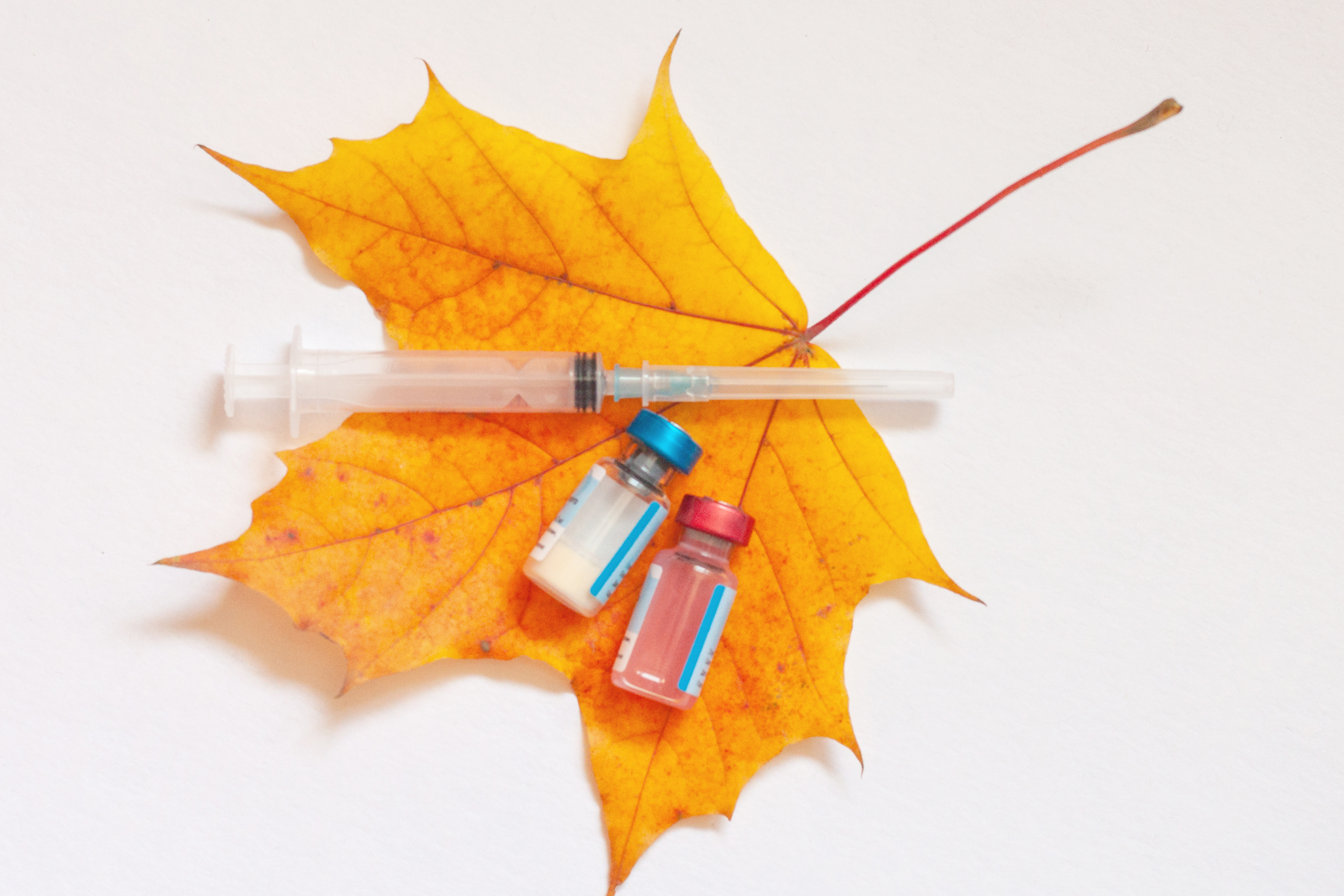Author
Reviewer
Share Article
Falling Back for Daylight Savings Time, Jumping Ahead in Respiratory Infection Prevention

| Author | Reviewer |
|
Christine Palmay, MD, CCFP, FCFP Midtown Health and Wellness Clinic Toronto, ON |
Michael Boivin, Rph, CDE Clinical pharmacist consultant and CHE developer, CommPharm Consulting Inc. Barrie, ON. |
Preparing for Fall: Insights on Respiratory Infection Prevention and COVID Vaccination Guidance
As we approach the fall season ahead, a few truths will always prevail:
- Pumpkin spice mania has become an odd national tradition.
- We are eternally conflicted as to when our winter tires should be installed.
- Frequent cough and colds are back again.
 With respiratory virus season nipping at our heals, our medical system braces for yet another influx of sick patients. Given the past three years of doom and gloom, I strongly feel that if nothing else, the time is to rally on with confidence and optimism. If we are being frank, an inconvenient truth must be accepted. Whilst we are all done with COVID, COVID is not done with us. Ongoing immunization vigilance still represents the best way to lower the risk of severe infection and hospitalization.
With respiratory virus season nipping at our heals, our medical system braces for yet another influx of sick patients. Given the past three years of doom and gloom, I strongly feel that if nothing else, the time is to rally on with confidence and optimism. If we are being frank, an inconvenient truth must be accepted. Whilst we are all done with COVID, COVID is not done with us. Ongoing immunization vigilance still represents the best way to lower the risk of severe infection and hospitalization.
![]() What is the latest guidance on COVID-19 booster doses for high-risk populations?
What is the latest guidance on COVID-19 booster doses for high-risk populations?
The end of summer 2023 marked a slow and steady upstroke in COVID cases, now culminating in what seems to be an upsurge in patients reporting positive testing. These cases are likely vastly underdiagnosed due to lack of testing in most parts of Canada. The reality is that most Canadians did not receive a spring COVID booster and with waning immunity they are more vulnerable to an infection in the fall. Influenza and RSV season will soon follow. This disastrous trio has potential to yet again overwhelm the medical system, thus making public awareness of the updated fall vaccine even more essential.
NACI published their guidance for fall COVID-19 immunization in very simple terms.
Beginning in the fall of 2023, all Canadians should receive an updated COVID vaccine if it has been more than 6 months from their last vaccination or a COVID illness. Emphasis is also places on patients who are most at risk of severe illness including:
- Adults 65 years of age or older
- Residents of long-term care homes and other congregate living settings
- Individuals with underlying medical conditions that place them at higher risk of severe COVID-19 (which includes patients that we regularly see in our practice)
- Individuals who are pregnant
- Individuals in or from First Nations, Métis and Inuit communities
- Members of racialized and other equity-deserving communities
- People who provide essential community services, including healthcare professionals
When discussing the upcoming fall season with my patients, I frame things in a proactive way and highlight the importance of protection for empowerment. I find that most patients respond more readily to personalized discussions as to why ongoing protecting is needed. Some tips for discussions include the following:
- Remind patients that immunity wanes over time and updated vaccinations are needed to essentially update their anti-virus software (nobody wants an older iPhone)
- Discuss the evolving nature of COVID variants. The currently circulating XBB.1.5 variant differs enough from its Omicron predecessor that the fall monovalent COVID vaccine truly is not a booster. I now use the term “updated vaccine” to highlight the evolving science trying to match changing variants.
- Include discussion about COVID vaccination in context of good primary protection. Discuss influenza, RSV, and pneumococcal vaccination as protection package.

- Promote co-administration with other vaccinations, such as influenza, to increase convenience and efficiency.
- Discuss personal risk assessment. If a patient is vulnerable to disease, consider masking when in public settings. Stay home when they are unwell…..and handwashing continues to be an excellent idea!
And most importantly……
- Remind ourselves that the single most important reason that patients continually cite as to why they chose to receive a vaccine continually remains that it was recommended by their primary care provider.
As the wind bring in your chills, embrace your pumpkin spice beverage and know that our guidance matters!
The development of this blog was overseen by the Canadian Collaborative Research Network and was supported through an educational grant from Moderna.
copyright © 2025 CCRN
Any views expressed above are the author's own and do not necessarily reflect the views of CCRN.

